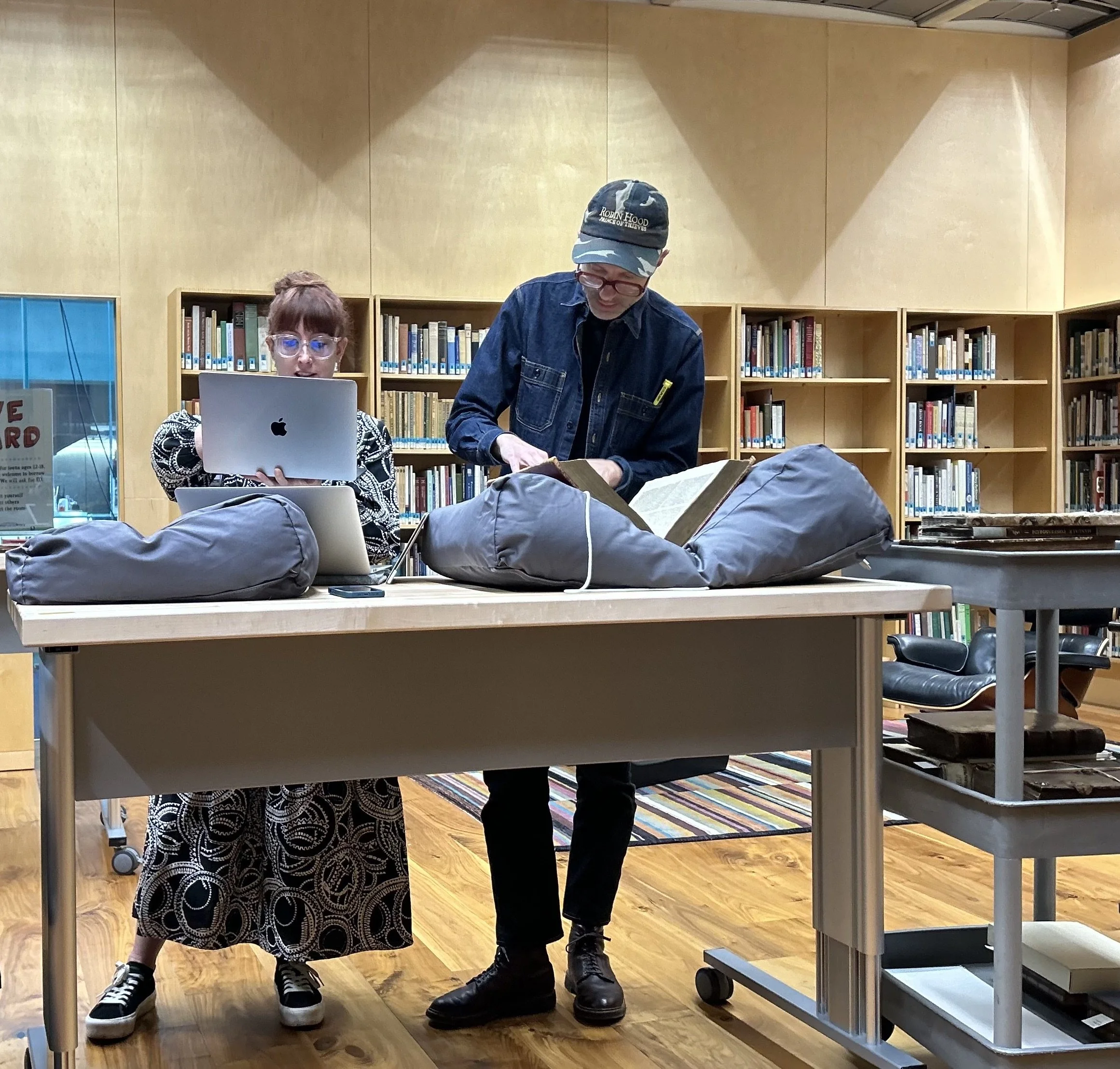On March 1, 2024, during a research forum at the Phoenix Public Library sponsored by the newly formed Arizona Book History Group, Aaron T. Pratt noticed two distinctive things about the marginal notes in the library’s copy of Raphael Holinshed’s Chronicles (1587): an instantly recognizable two-stroke italic ‘e’ and unusually dark ink. The annotations in the Holinshed were reminiscent of handwritten notes in a copy of the Shakespeare First Folio now at the Free Library of Philadelphia—marginalia that Jason Scott-Warren and I have argued were inscribed by the poet and author of Paradise Lost John Milton.
Aaron called me over to examine what was written the margins of the Holinshed: cross-references to other books, emendations, and swoopy, energetic vertical “brackets” alongside (presumably) passages of interest. We called up digital images of Milton’s handwriting from two holograph manuscripts—his Commonplace Book at the British Library and the Trinity Manuscript at Trinity College, Cambridge—and began comparing the Holinshed letterforms and letter combinations with letterforms and letter combinations in these documents. Jason was on call via text from the UK. The match was striking.
Over the next few weeks, we worked remotely across three time zones with Jason to flesh out the attribution, tracking down marginal cross-references to other books (were they known to be in Milton’s library?), collating bracketed passages in the Holinshed with the approximately 100 citations of the Holinshed edition in Milton’s Commonplace Book, and comparing the other annotative practices on display in the Holinshed to Milton’s annotative modus operandi in the other nine—yes, just nine—books positively identified as having been annotated by him.
Our case for Milton’s ownership of the Phoenix Public Library’s Holinshed is published in this week’s issue of the Times Literary Supplement and will be in front of the paywall for a week. Click here to read.
The identification of the book as Milton’s would not have been possible without the support of the English Department at Arizona State University, and the vision of faculty members Brandi K. Adams and Jonathan Hope, who thought to bring book historians to Phoenix earlier this spring to study the Phoenix Public Library’s Alfred Knight Collection, to which the Holinshed belongs. Our esteemed colleagues Zachary Lesser and Tara L. Lyons also participated in the Knight Collection research forum and contributed key insights to the early discussions of the Holinshed annotations.
Finally, we are also grateful to the staff of the Phoenix Public Library—especially Special Collections Manager Alex Mada—for allowing us to work with the books in the Knight Collection that they so carefully steward.

